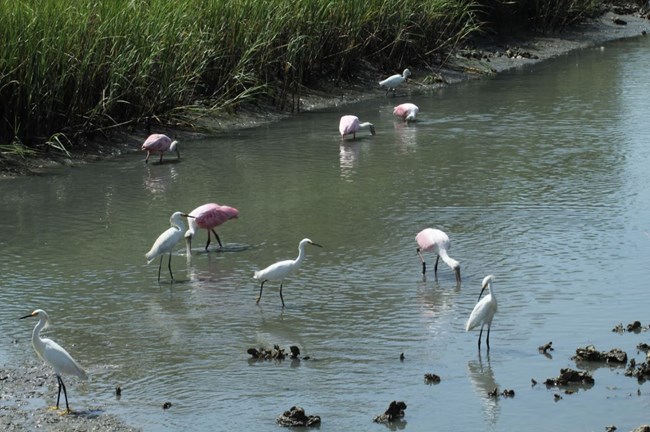
NPS The movement of the tides create unique ecosystems called intertidal zones. Fort Matanzas doesn’t have rocky shorelines like other intertidal zones (such as in New England), but the park still contains a diverse collection of plants and animals that inhabit and thrive in the different environmental conditions created by varying water levels throughout the tidal cycle. When low tide takes the water away, you can find a surplus of creatures that you wouldn’t be able to see at high tide. A few different types of animals that people may discover at low tide are parchment tube worms, various types of sponges, marsh periwinkle snails, various fish species, oysters, and fiddler crabs. A specific intertidal zone that is found in the park is the tidal marsh. A tidal marsh (also known as a "tidal wetland") is a marsh found along rivers, coasts, and estuaries which floods and drains by the tidal movement of the adjacent estuary, sea, and in our case, inlet. These marshes provide food, habitat, and nursey areas for many fish and shellfish. In addition to providing habitat, marshes act as a filter, by absorbing excess nutrients from upland runoff that could potentially cause harmful algae blooms in larger waterways. And they also absorb the energy of storms off the oceans and thus help protect inland areas from excessive flooding. That’s an extra added benefit of a healthy marsh when hurricane season rolls around. |
Last updated: August 14, 2021
